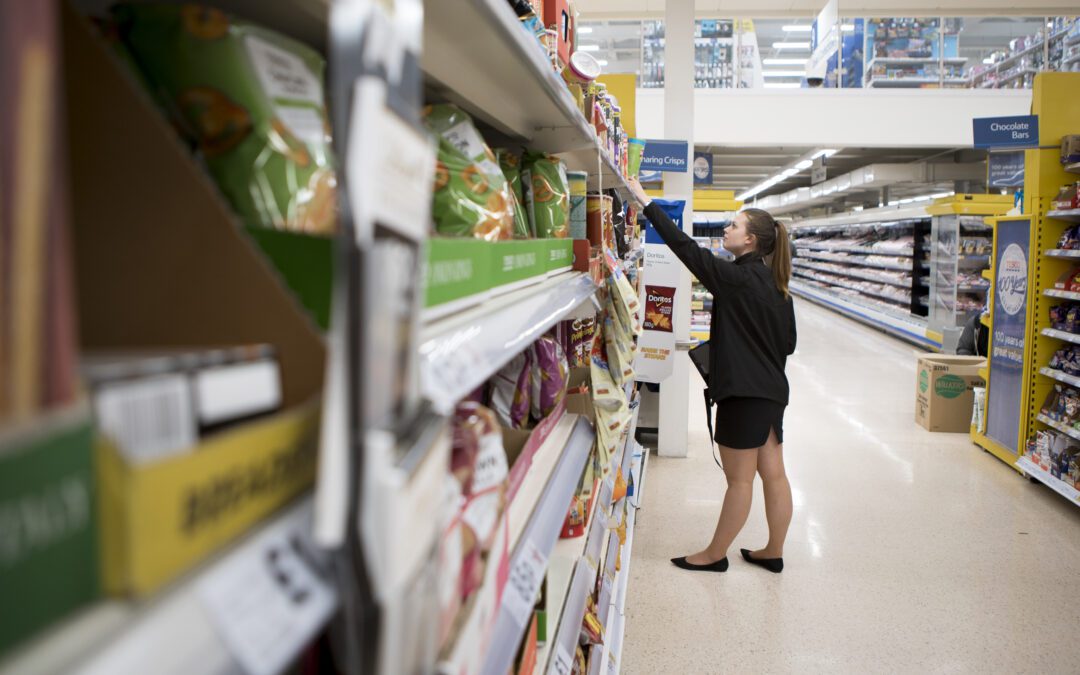New legislation, landing April 2022, is going to have a very visible, logistical and fiscal impact when it comes to selling products with high levels of fat, sugar or salt (HFSS) in future.
The two core restrictions headed our way are rules specifying:
- Where certain products can be sold in the store environment
- Which specific products can no longer go on promotion displays
The list of effected products is pretty extensive. We’re talking: soft drinks, cakes, chocolate confectionery, sugar confectionery, ice cream, morning goods (e.g. pastries), puddings, sweet biscuits, breakfast cereals, yoghurts, milk-based drinks with added sugar, juice-based drinks with added sugar, pizza, ready meals, crisps and savoury snacks… the list goes on.
Some are watching and waiting before making any big calls, but many are already well underway with plans to mitigate these restrictions before they come into force. We’ve spoken to a number of brands that have weighed up whether to reformulate their products or cut product lines to accommodate the lack of future sell-space. Kellogg’s has opted to cut sugar in kids’ cereal by 10% by end of 2022 and is also slashing salt.
Losers and loopholes
Ice cream is one of the biggest losers here (double whammy high fat, high sugar) but ice cream is also an example of the loopholes at play. While ice cream can’t feature ‘on promotion’, it could technically be included within a meal deal offering, and therefore become part of a promotion.
Manufacturers will also still be able to advertise their product lines but (again!) there will be restrictions to navigate. From next year we will start to see less advertising of specific products, and more on increasing general brand exposure with a greater focus on names, logos and characters.
Retailers are the ones tasked on paper with enacting these changes – since it is their store environment – giving them the burden of ensuring protocol when it comes to what is on promotion, placed on the end-aisles, and in future red zones.
The reality, of course, is that a high number of household products will now have limited spaces to choose from and a whole host of manufacturers will be fighting it out to secure those prime centre bay slots. The knock-on effect will be greater burdens placed on sales teams who will be working hard to make sure levels of shelf adherence are high across every store, for every product line.
Test and learn
The current obstacle is that most stores aren’t equipped to share predications with brands or explain how these changes will influence their collective bottom lines. To tackle this, through relationship in store we witnessed several trials’. The results were interesting.
At Tesco’s Waltham Abbey store, for example, we removed all HFSS products from end aisles – while keeping those same products within the aisle – to see the impact. One product we looked at was Easter eggs. Tesco removed all free-standing Easter displays from their end aisles and found that they lost 22% in sales from these products. However, by replacing these products with healthy snacks and products, they were able to reduce the deficit.
Stock up on data
Retailers and manufacturers know it’s coming, but the considerable number of grey areas and loopholes mean they don’t really know what they need to do for the best. Confectionary, for instance, remains a significant challenge, as the answer to ‘where should these go if not here’, hasn’t yet been answered in a satisfactory way.
Decisions like these have a knock-on effect on other product lines that also want to ensure product availability, space on shelves, and capacity of products to maximise sales opportunities. The answer and best form of armour right now is data.
Gathering insights is the best approach to any unknown situation and, for our teams on the ground at Tactical Solutions, our goal is to be the eyes and ears for brands. We’re out in the field every day, talking to managers, asking the right questions and feeding back the valuable information our clients need – with the visuals and image recognition data to match.
By going into stores on behalf of brands, we’re able to show what might need to change – from audit exposure, to making the measurements of store work better for certain products. Crucially, our powerful technology ensures we can give brands as much information as possible.
Find out how our field teams, equipped with Recognise technology and TS Eye, could arm you with the insights you need to make the big calls over the next few months and beyond.
Contact me to find out more hello@tacticalsolutions.co.uk




